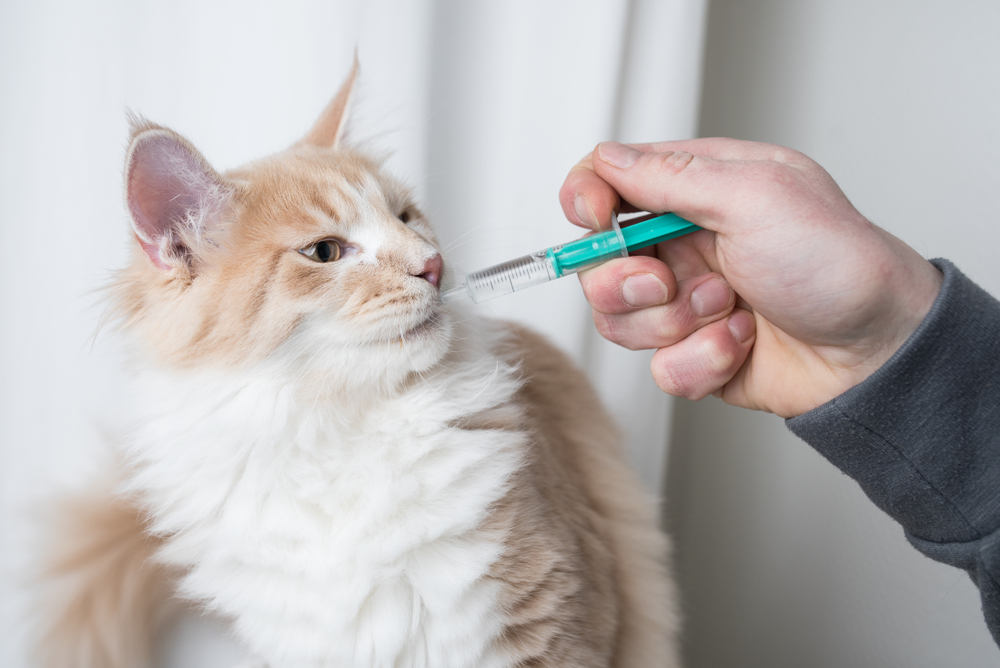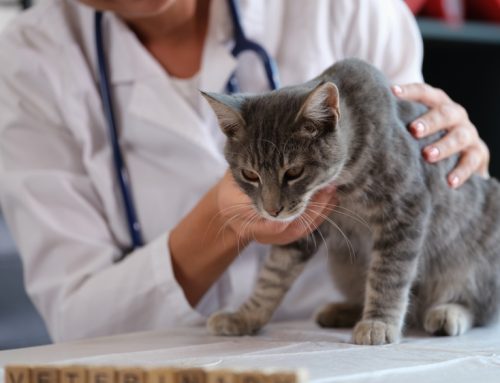No pet owner wants to see their four-legged friend in pain, and oftentimes, they don’t. Cats and dogs instinctively hide pain signs, and their owner doesn’t realize they need veterinary care. Read our Chiefland Animal Hospital team’s guide to learn about pain types, how to spot your furry pal’s pain and its potential causes and treatment options.
Acute pain in pets
Pets develop acute pain suddenly or may feel the pain for only a short time. Acute pain is typically easier to identify than chronic pain, as the condition may result in your pet limping or vocalizing, or you may see or know about an event that could be causing your furry pal’s pain.
Acute pain is usually associated with an illness, injury, or surgery, stimulating the brain to signal that an area needs protection and healing. For example, the acute pain associated with a cut paw pad triggers behavior changes that protect the paw by ensuuring your pet avoids putting weight on it.
Chronic pain in pets
Chronic pain can develop if your pet does not receive treatment for their acute pain. However, chronic pain can also develop gradually, making the condition more difficult to spot. In many cases, an owner may attribute their pet’s chronic pain signs, such as those associated with osteoarthritis, to their furry pal’s normal aging changes, making a proper diagnosis essential for a painful pet to receive the treatment they need.
Unlike acute pain, which protects the body as it heals, chronic pain serves no protective purpose. Chronic pain also causes pets to feel significant stress, anxiety, and depression, and to experience a decreased quality of life, as ever-present inflammation constantly bombards the brain with pain signals. Over time, chronic pain can cause a pet to become persistently hypersensitive to any painful stimulus.
Pain causes in pets
While our veterinary team can often easily classify a pet’s pain as acute or chronic, some cases are not so clear-cut. Determining your pet’s pain type is valuable to their treatment plan, as therapy focuses on resolving the pain’s cause. Any inflammation-causing condition or cellular damage can trigger a pet’s pain. Some of pets’ most common pain causes include:
- Surgery
- Injuries
- Ear, skin, and urinary tract infections (UTIs)
- Joint dysfunction
- Dental disease
- Gastrointestinal (GI) disorders
- Neuropathies
- Cancer
Pain signs in pets
Cats and dogs instinctively know that showing pain makes them vulnerable, so they hide illness signs. Your pet’s pain signs may be subtle or dramatic, so be on the lookout for the following indications that they are experiencing discomfort:
- Behavior changes — If your pet’s personality takes a turn, they could be in pain. Normally outgoing, friendly pets may become withdrawn and irritable, or lash out aggressively in an attempt to protect themselves from further hurt. An uncomfortable pet may become restless and unable to relax, or they may appear lethargic and sleep more than usual.
- Limited mobility — Pets in pain are often less mobile and may refuse to take part in their normal activities. Your pet may be unable to jump, use stairs, or navigate slippery surfaces. They may also walk more slowly, have difficulties standing or laying down, or limp.
- Decreased appetite — Dental disease often causes pain during eating, but any discomfort can put your pet off their food.
- Vocalization — If your pet is in pain, they may whine, whimper, cry, or bark or meow excessively. They may also hiss or growl if you touch a painful spot.
- Altered grooming habits — Pain, such as arthritis discomfort, can make grooming challenging for your pet. Pain can also trigger excessive licking and chewing at the sore spot.
- Inappropriate elimination — A pet who is unable to posture properly to urinate or defecate, or comfortably use the litter box, are likely to eliminate in inappropriate spots indoors.
Pain management options for pets

Our Chiefland Animal Hospital team can generally remedy a pet’s acute pain through a multimodal treatment plan, but, while chronic pain typically cannot be cured, we can help manage your furry pal’s discomfort. Depending on your pet’s needs, our team may formulate pain management options such as an anesthetic protocol for surgery, an ongoing pain management plan for osteoarthritis, or therapies for allergy-induced ear infections. We can help alleviate your pet’s pain by offering the following:
- Nonsteroidal anti-inflammatory drugs (NSAIDs) — NSAIDs are often the first drugs veterinarians reach for when a pet has acute or chronic pain. By easing inflammation, NSAIDs reduce the body’s pain response, and these drugs are often highly effective at helping a pet become comfortable. We typically prescribe these medications for a few postoperative days, or long term for chronic conditions.
- Opioids — A controlled drug class, opioids are generally limited to in-hospital administration. These medications are exceptionally effective at managing surgical pain and are often part of a balanced anesthetic protocol. Our team can also administer opioids postoperatively to ensure a recovering pet remains comfortable and pain-free.
- Adjunctive pain medications — We may prescribe other complementary drugs to manage your pet’s pain. For example, some medications alleviate neuropathic pain or work synergistically with NSAIDs and opioids.
- Supplements — Supplements can reduce inflammation to help manage a pet’s pain. These products are particularly useful at combating osteoarthritis pain and inflammation.
- Diet — Proper nutrition that is rich in omega-3 fatty acids can reduce painful inflammation, and help maintain your pet at a healthy weight.
- Low-impact exercise — Regular activity will keep your pet strong, lean, and fit, preserving joint health and reducing pain.
- Environmental modifications — Installing ramps, providing firm bedding, applying traction aids to slippery floors, and elevating food and water bowls are ways you can change your home to help make life easier for a pet who is in pain.
Although administering medication to your pet can be a challenge, ensuring they receive anti-inflammatory drugs, opioids, or other pain-management medications is essential for their wellbeing and good quality of life. Whether your furry pal needs pain relief for a few days after surgery, or long-term chronic pain management, numerous treatment options are available that you or our team can successfully administer. Even cats, who are notoriously difficult to medicate, especially when they are in pain, stressed, and scared, can receive pain medication without a significant struggle through transdermal applications (i.e., medications they absorb through their skin).
If you suspect your pet is in pain, seek prompt veterinary care. Schedule your pet’s pain consultation with our Chiefland Animal Hospital team.








Leave A Comment